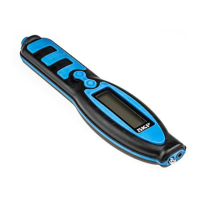SKF Machine Condition Advisor 23
User Manual
Class
OK Alert Danger
CL1 0-1 gE
1-2 gE over 2 gE
CL2 0-2 gE
2-4 gE over 4 gE
CL3 0-4 gE
4-10 gE over 10 gE
Sensor Placement Techniques
Proper hand-held sensor technique is vital to the
accuracy of Machine Condition Advisor
measurements! In general, it is critical that you
perform consistent readings.
Perform measurements with the machine operating
under normal conditions. For example, when the
machinery has reached its normal operating
temperatures and is running under its normal rated
condition (at rated voltage, flow, pressure and load).
On machines with varying speeds or loads, perform
measurements at all extreme rating conditions, in
addition to selected conditions within these limits.
When placing the sensor on the machine, generally
avoid greasy, oily, wet, or painted surfaces, housing
splits, and structural gaps. Select the best
measurement POINT (specifically avoid unloaded
bearing zones), and be consistent in sensor position,
sensor angle, and contact pressure.
Sensor Position - If possible, choose a flat surface in
the bearing’s load zone to press the sensor tip against.
Measurements should be taken at the same precise

